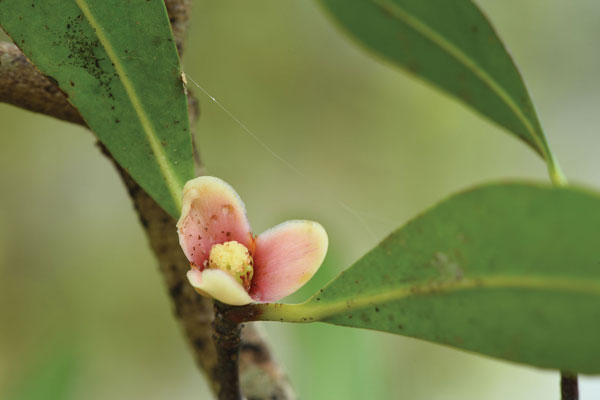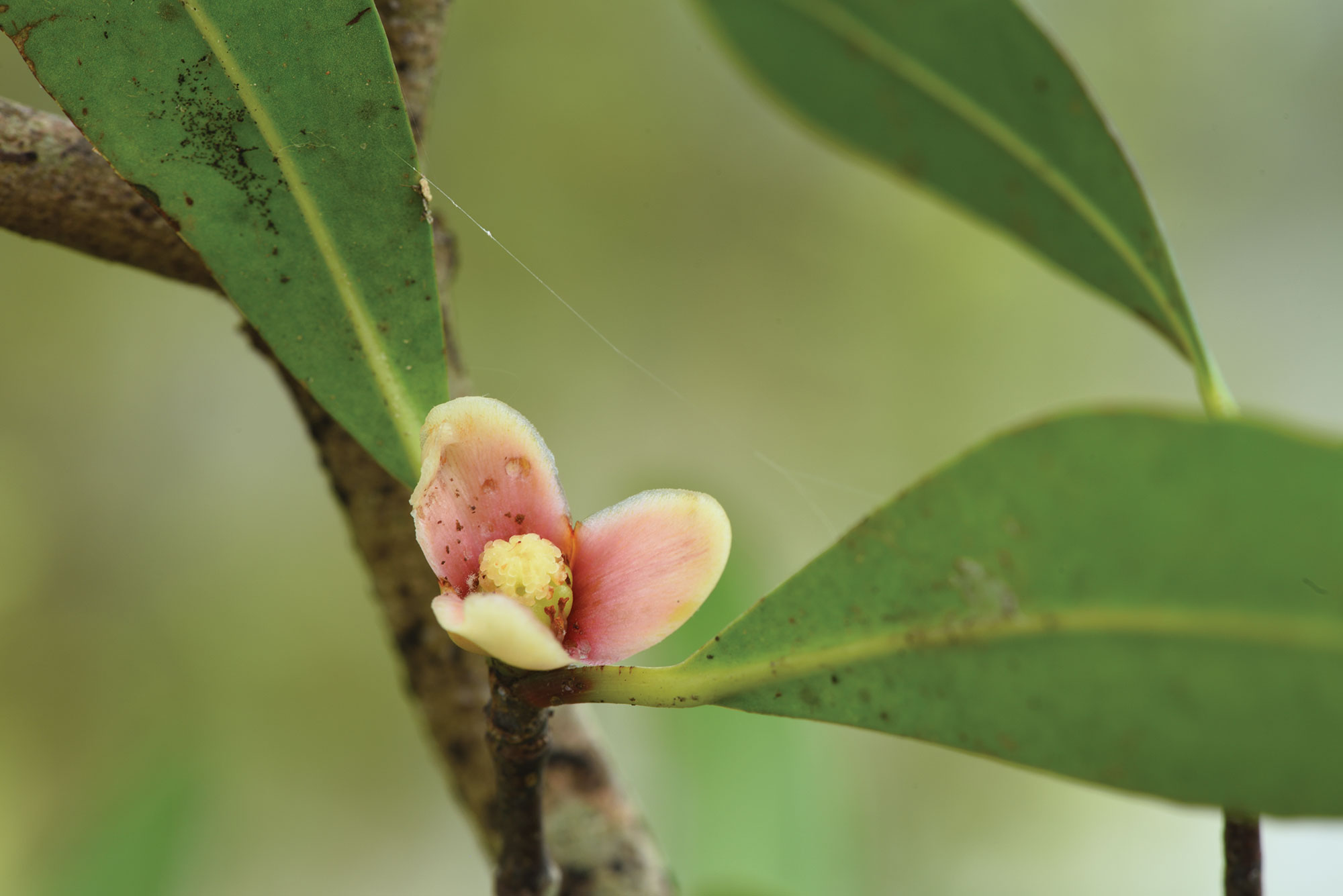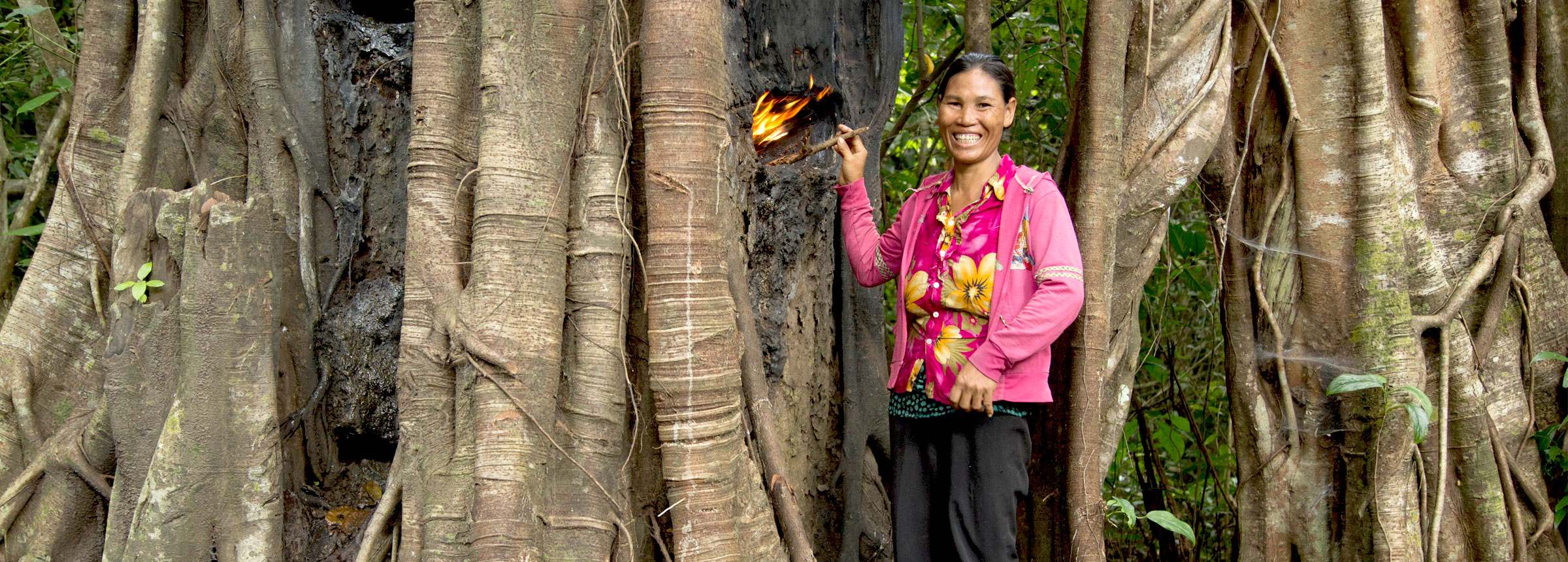
Planting Interest in Ecotourism
New guidebook highlights over 30 plant species of local cultural significance in Cambodia’s Sandan region.

In the lush Sandan District of Cambodia’s Kampong Thom Province, plants run wild. The region’s mosaic of different habitats — dense evergreen forests, important riparian buffer zones, cultivated land, seasonally flooded farmland — provides a diverse sampling of plant species and functions. Local communities use local flora as food, medicine and building material, while several threatened wildlife species make their habitats in the greenery.
The USAID Supporting Forests and Biodiversity (SFB) project, implemented by Winrock International, recently compiled a guidebook of culturally significant plant species found in Sandan’s Community Forest areas. Following a similar format to the project’s previous guide “Birds in Sandan,” the book presents short profiles of more than 30 plant species regularly used by the community, including beautiful photographs, local Khmer names for each species, scientific binomials and plant families, brief botanical descriptions, and suggested uses.
“This book has been produced as an ethnobotanical manual which will inform visitors to the Community Forest areas,” said SFB Chief of Party Dr. Joel Jurgens. “Its aim is to give an idea of the traditional importance of Sandan’s flora and the diverse ways in which it is used.”
Much of the information in the guide comes from local plant experts within the Sandan community, who helped the SFB team select and identify specimens of the featured species. Species important beyond the local community and Cambodian market have additional details on international uses and applications.
The plants of Sandan remain an important local resource, supporting economic and cultural resilience. As Cambodia develops and urbanization increases, there is a danger that traditional knowledge will be lost. This guide seeks to encourage interest in this fascinating aspect of Khmer culture, educate the increasing number of local and international tourists who visit the sites around Prey Lang, and support on-going efforts to protect Cambodia’s rich natural heritage for future generations.
To download the guidebook, click here.
Related Projects

